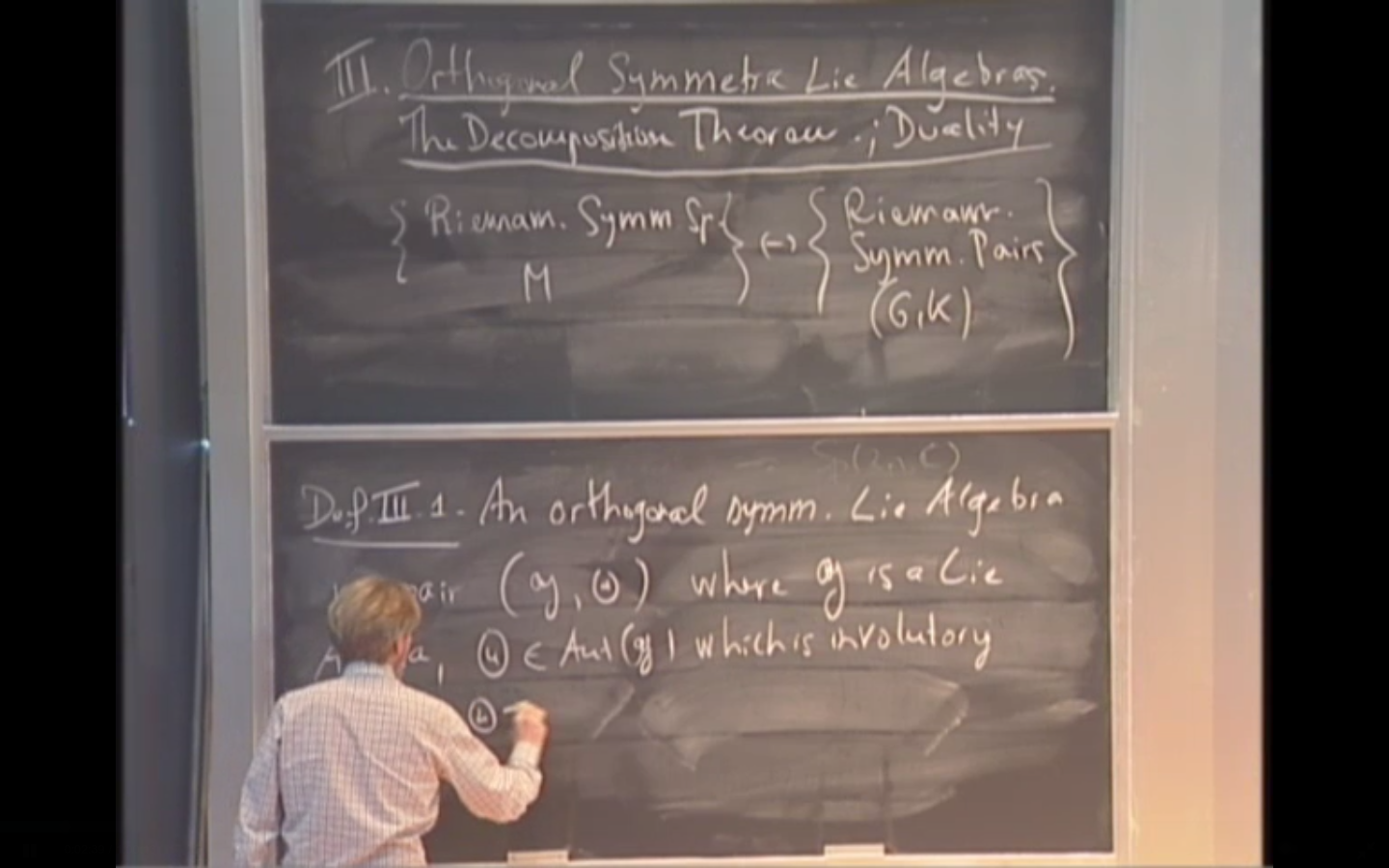Introduction to the study of Riemannian Symmetric Spaces, 3
Presenter
January 22, 2015
Keywords:
- symmetric space
- positive curvature
- irreducible spaces
- totally geodesic subspace
- Lie groups of Riemannian isomorphisms
- higher Teichmuller theory
- hermitian symmetric space
- surface group
MSC:
- 37F30
- 37Fxx
- 37-xx
- 30F60
- 30F20
- 30F10
- 30Fxx
Abstract
Symmetric spaces are special Riemannian manifolds where at each point the geodesic symmetry is an isometry. Such a space has a Lie group of isometries acting transitively and we will study the structure of these spaces by using the interplay between the Riemannian and the Lie group theory aspect. For instance we will see that a symmetric space is a product of irreducible ones, and that the latter come in three types: compact type (positive curvature), Euclidean type (zero curvature) and non-compact type (negative curvature), with a remarkable duality between the compact and non-compact type. Then we will turn to symmetric spaces of non-compact type and establish the connection between regular elements and maximal flat totally geodesic subspaces; with this at hand, we will obtain the root space decomposition. In the last part we will study more closely the symmetric spaces that admit an invariant complex structure (hermitian symmetric). These form the natural framework for the study of that part of higher Teichmueller theory concerned with maximal representations of surface groups.
Prerequisite: some basic knowledge of differential and Riemannian geometry, ideally corresponding to the eight first chapters of M. do Carmo, "Riemannian Geometry", Birkhauser, 1992; the book is freely available in pdf format on google.
